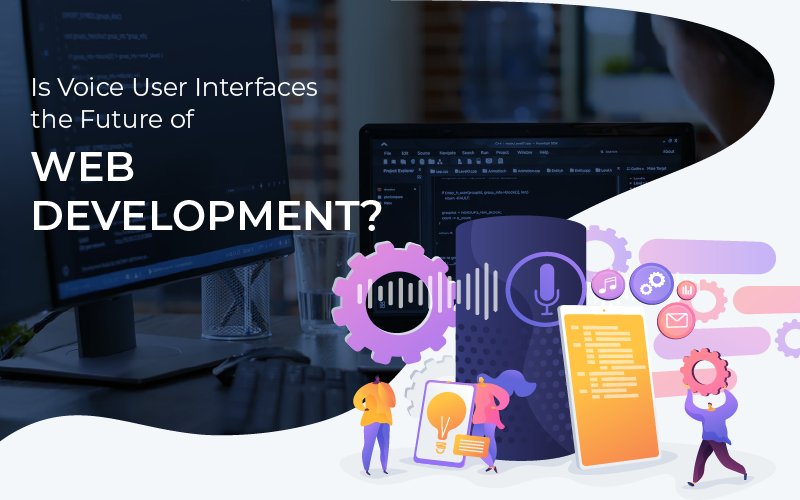The Web Design Dubai service is about creating digital knowledges that connect with your target audience, not just lines of code. DG is a strong proponent of user-centered design and visual storytelling. DG’s group of driven creatives combines style and innovation to make sure that your online presence captivates viewers rather than just existing.
What is a Conversational UI?
Conversational User Interface (CUI) refers to a recent design paradigm enabling users to convey messages to web interfaces via natural language, keeping the interaction to a minimum yet making it smarter. Instead of the utilization of input devices traditionally in terms of clicking or typing, CUI enables users to communicate via voice-based interfaces (VUI) or chatbots via text-based interfaces.
Types of Conversational UI
- Voice-Based Interfaces (VUI): Uses speech recognition technology to comprehend and respond to voice commands.
- Text-Based Chatbots: Leverages AI-based chatbots to deliver computer-generated responses in the form of messaging.
Both forms of conversational UI are intended to simplify digital interaction, making it more intuitive, intuitive, and engaging.
The Emergence of Voice UI
Voice technology developed at a remarkably rapid rate and AI-powered voice assistants like Alexa, Siri, and Google Assistant gained popularity. With the booming trend of smart devices and voice search, VUI has also become an unavoidable aspect of today’s web designing.
Top Logo Design Dubai are now embedding voice UI on websites and apps to provide hands-free navigation and fast responses. This enhances accessibility, making digital interfaces more accessible for users of varying abilities. As voice search continues to increase, website optimization for VUI can enhance user experience and increase search rankings, putting companies ahead in the digital arena.
Why Voice UI is Gaining Popularity
- Hands-Free Convenience: Users can browse websites, shop online, or get information without using their hands.
- Faster Interaction: Speaking is often quicker than typing, making interactions more efficient.
- Improved Accessibility: Voice UI benefits people with disabilities, making digital experiences more inclusive.
- Integration with Smart Devices: Voice assistants are now embedded in smartphones, smart TVs, and IoT devices.
Challenges of Voice UI
- Privacy Concerns: Users may hesitate to use voice technology due to privacy risks.
- Accuracy Issues: AI may misinterpret commands, leading to frustration.
- Environmental Noise Interference: Background noise can impact voice recognition accuracy.
The Role of Text-Based Chatbots
Although voice UI is picking up steam, text-based chatbots are still an attractive and handy option for enterprises. These machine-learning-based bots interact with consumers via messaging, websites, and mobile applications.
Text-based chatbots provide immediate feedback, simplify customer care, and support several questions simultaneously, thus becoming an important resource for businesses. They maximize user interaction through speedy support, recommendations based on individuals, and intuitive navigation.
Advantages of Text-Based Chatbots
- 24/7 Customer Service: Chatbots can respond to inquiries 24 hours a day.
- Personalized Recommendations: AI-based chatbots evaluate user behavior to make recommendations that are relevant to them.
- Cost-Efficient: Reduces human support agent requirement.
- Multitasking Ability: Able to process multiple inquiries at the same time.
Drawbacks of Text-Based Chatbots
- Limited Comprehension: Certain bots fail to comprehend sophisticated queries or emotive context.
- Impersonal Conversations: Users can receive chatbot replies that sound mechanistic or unoriginal.
Voice vs. Text: Which One is Better?
While both voice and text interfaces have their strengths, the ideal choice depends on user preferences, industry needs, and business goals.
| Feature | Voice UI | Text-Based Chatbots |
| Speed | Faster | Slower |
| Convenience | Hands-free | Requires typing |
| Accuracy | Can misinterpret | More precise |
| Accessibility | Beneficial for disabilities | Less inclusive |
| Multitasking | Ideal for multitasking | One conversation at a time |
| User Preference | Gaining popularity | Still widely used |
The Best Model: A Hybrid Model
Several companies are now using a hybrid conversational UI strategy that combines both voice and text interfaces. With this, there is flexibility and choice for users, and there is a consistent experience across a variety of devices and contexts.
How Conversational UI is Revolutionizing Web Design
Conversational UI revolutionizes web design by making digital interactions more intuitive and interactive. Here’s how:
- Better User Experience: Conversational UI provides a more natural interaction process, making websites more human-like and accessible.
- More Engagement & Retention: Quick, conversational answers are preferred over tedious navigation menus and forms.
- Improved Personalization: AI-powered conversational interfaces understand user behavior to provide personalized experiences.
- Enhanced Accessibility: Voice commands assist people with disabilities in navigating websites with ease.
- SEO Benefits: With the growth of voice search optimization, companies can improve their search rankings by using conversational UI.
Implementing Conversational UI in Web Design
1. Choose the Right Type of Conversational UI
- If your audience prefers hands-free interaction, invest in Voice UI.
- A text-based chatbot might be ideal if your business handles frequent customer queries.
- A hybrid approach can equip the best of both worlds.
2. Optimize for Voice Search
- Use natural language keywords to align with how people speak.
- Implement structured data for more useful search engine visibility.
3. Design for Contextual Awareness
- AI should recognize user intent and context to provide relevant responses.
4. Ensure Security & Privacy
- Be transparent about data usage policies and ensure secure transactions.
5. Test and Improve
- Continuously monitor user interactions to refine and enhance conversational experiences.
Conversational user interfaces are changing web design by making digital interactions easier to use, more approachable, and more interesting. Voice UI and text-based chatbots have their good points, but businesses need to look at what their customers want to find the best solution. Keeping your place ahead of the curve, a mix of hybrid conversational UI techniques can offer the best user experience.
Users can get instant replies and personalized help when websites use AI-powered chatbots and voice assistants. This improves the consumer experience as well as helps companies increase involvement and sales. Text and voice interactions taken together can involve guests and ease navigation. A clever and flexible conversational UI can help your website be competitive and user-friendly as technology develops.
- The conversational user interface improves involvement and user experience.
- Voice UI is expanding rapidly, but text-based chatbots remain crucial.
- The best outcomes come from a hybrid model mixing text and speech.
- Maximizing voice search will help with SEO results.
- User confidence depends critically on security and privacy issues.
Using conversational UI in web design is now a need as digital trends keep changing; it is not a choice. Are you prepared to include a conversational user interface in your website? The future is right here now!





